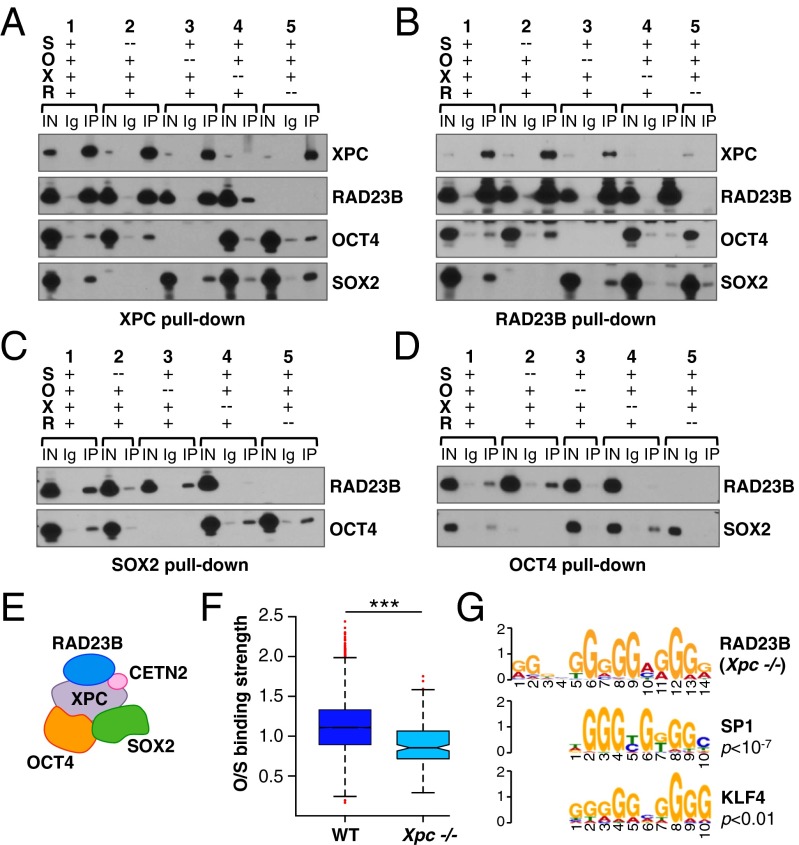Fig. 5.
SCC interacts with OCT4/SOX2 mainly via XPC. (A–D) Pull-down assays with XPC (A), RAD23B (B), SOX2 (C), and OCT4 (D) antibodies in 293T overexpressing different combinations of SOX2, OCT4, XPC, and RAD23B FLAG-tagged proteins, followed by immunoblotting with anti-FLAG antibody. IN, 0.5% input; Ig, IgG control pull-downs; IP, specific pull-downs. IgG controls were intentionally omitted from the gel when pulling-down through the protein excluded from the transfection reaction (set 4 in A, set 5 in B, set 2 in C, and set 3 in D). (E) Schematic of SCC interaction with OCT4/SOX2 as inferred from A–D. (F) Boxplot showing the enrichment of OCT4/SOX2 (O/S) at RAD23B binding sites in WT and Xpc knockout (Xpc−/−) mESCs. O/S binding strength is calculated as log10 of scaled fold ratios between O/S and control IgG ChIP-seq signals. The analysis only includes RAD23B ChIP-seq peaks overlapping with O/S sites (24). ***P < 10−10, ANOVA. Complete list of RAD23B peaks in Xpc−/− mESCs in Dataset S1; see Fig. S6B for specific examples. (G) Sequence analysis of RAD23B binding sites in Xpc−/− mESCs as in Fig. 2B.

